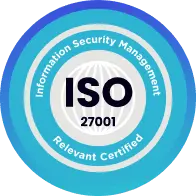What Is Social Media Marketing?

Social media marketing encompasses the art of crafting content tailored to various social media platforms, a strategic endeavor aimed at not only promoting your products or services but also fostering a sense of community among your target audience and channeling a steady stream of traffic to your business. Given the perpetual emergence of fresh features and platforms, it’s imperative to acknowledge that social media marketing remains in a state of perpetual evolution.
The essence of social media marketing lies in meeting your audience and customers precisely where they are, as they engage socially with both each other and your brand. Yet, the effectiveness of your strategy hinges upon your astute selection of the social networks that resonate most with your audience.
Before we dive deeper into the realm of social media marketing, let’s segment our approach according to each platform’s unique characteristics and attributes.
Social Media Marketing Platforms
Most popular SMM platforms:
- TikTok
- YouTube
- Snapchat
- Clubhouse
 1.Facebook
1.Facebook
– Users: 1.9 billion daily active users globally
– Audience: A balanced mix of Generation X and Millennials
– Industry impact: Primarily B2C
– Ideal for: Cultivating brand awareness and advertising
Facebook stands tall as the grand titan of social media, boasting a rich history since its inception in 2004. It has evolved into an indispensable tool for B2C businesses, offering both sophisticated advertising tools and organic engagement opportunities.
2.TikTok
– Users: 1 billion monthly global users
– Audience: Dominantly Gen Z, followed by Millennials
– Industry impact: Influential in both B2B and B2C spheres
– Best suited for: Crafting short-form, creative video content, encouraging user-generated content, and driving brand awareness
When you contemplate short-form video, TikTok undoubtedly comes to mind. Its meteoric rise in popularity during 2020 continues unabated, positioning it as a premier platform for community-building, with marketers ranking it second only to YouTube.
3.Instagram
– Users: 1 billion monthly active users
– Audience: Predominantly Millennials
– Industry impact: Primarily B2C
– Best for: Showcasing high-quality imagery and videos, encouraging user-generated content, and effective advertising
Despite its relatively recent launch, Instagram has taken the world by storm. This platform reigns supreme for sharing visually captivating content, and its advanced e-commerce tools set it apart from the competition. Users can now discover, browse, and purchase products without leaving the app, rendering Instagram a formidable contender.
4.Twitter
– Users: 211 million daily active users worldwide
– Audience: Mainly Millennials
– Industry impact: Influential in both B2B and B2C domains
– Best for: Facilitating public relations, delivering exceptional customer service, and fostering community engagement
While Instagram embraces visuals, Twitter embraces the power of concise words. What began as a platform for 140-character Tweets has expanded to encompass features like Twitter Spaces, designed for audio interactions, Twitter Communities for community building, and Twitter Moments for sharing captivating content with your followers.
5.LinkedIn
– Users: 774 million active users globally
– Audience: Comprising Baby Boomers, Generation X, and Millennials
– Industry impact: Focused on B2B interactions, business development, and social selling
– Ideal for: B2B enterprises seeking to connect with decision-makers and build industry-specific communities
LinkedIn, often referred to as Facebook’s professional counterpart, boasts a well-defined audience: working professionals seeking networking opportunities and new prospects. This makes it the go-to platform for B2B companies seeking to identify key decision-makers and nurture industry-specific communities.
6.YouTube
– Users: Over 315 million daily active users worldwide
– Audience: Primarily Millennials but with a diverse demographic reach
– Industry impact: Significant influence in both B2C and B2B sectors
– Best suited for: Building brand awareness, crafting long-form entertainment, and offering educational how-to videos
HootSuite identifies YouTube as the world’s second-most-visited website, and marketers unanimously endorse it as the premier platform for community-building. Its appeal lies in the prevalence of long-form content, making it an ideal medium for sharing educational material that captures users’ attention for extended durations.
7.Snapchat
– Users: 306 million daily active users globally
– Audience: Predominantly Generation Z
– Industry impact: Prominent in the B2C arena
– Best for: Amplifying brand awareness and advertising
Snapchat’s introduction in 2011 heralded the era of ephemeral content, content designed to be shared among friends and expire after 24 hours. Despite facing competition from Instagram’s Stories feature, Snapchat remains popular among young adults and continues to thrive.
8.Pinterest
– Users: 444 million monthly active users worldwide
– Audience: Mainly Millennials, with a strong presence in Gen Z, Gen X, and Baby Boomers
– Industry impact: Primarily B2C
– Ideal for: Visual advertising and inspiring users with creative ideas
Picture Pinterest as a visual storyboard, a platform where users seek inspiration for an array of projects, from fashion to home decor. With 85% of Pinners using Pinterest as their starting point for new ventures, and 80% discovering new brands and products, it serves as both a discovery tool and a canvas for brands to weave their narrative through compelling visual stories.
9.Clubhouse
– Users: 10 million weekly active users globally
– Audience: Predominantly Millennials
– Industry impact: Influential in both B2B and B2C realms
– Best for: Enabling engaging conversations, building community, and leveraging the resurgence of audio
Clubhouse made a splash upon entering the social media scene in 2020, offering an audio-only platform for sparking intriguing dialogues with followers and strangers alike. It initially garnered attention through its invitation-only structure during beta testing but now stands open to all, operating across IOS and Android devices. Its versatility appeals to both B2B and B2C enterprises, tapping into the resurgent popularity of audio content.
Check out our guide on the topic.
Unlocking the Power of Social Media Marketing
Let’s embark on a journey to unveil the marvels of social media marketing, seen through the lens of a dedicated user (well, that’s me). As I gracefully scroll through my Instagram feed, habitually revisiting it throughout the day, I’m consistently captivated by The Frye Company’s new posts and engaging stories. The allure of their boots, clothing, and accessories has always been a personal favorite, but what truly enchants me is their Instagram content.
How to unlock the power of SMM:
- Amplify Your Brand’s Reach
- Ignite Leads and Fuel Conversions
- Cultivate Customer Relationships
- Glean Insights from Competitors
Each photo harmoniously sports the same filter, forging a sense of professionalism, artistry, and meticulous organization, enticing visitors like myself to peruse their profile. But what truly sets Frye apart is its interactive approach. They provide a unique hashtag for their followers to use, granting them a chance to be featured when sharing photos adorned with Frye products.
Frye’s Instagram account serves as a stellar archetype of triumphant social media marketing – it’s visually captivating, distinctly Frye, fosters engagement among its nearly 200K followers, and effectively promotes its merchandise.
Yet, why is social media marketing indispensable, and how can you craft a tailored strategy for your specific business? Let’s explore this realm by delving into the multitude of compelling reasons to embrace social media marketing.
- Amplify Your Brand’s Reach
The vast population frequenting social media platforms offers an unparalleled opportunity to connect with thousands, if not millions, of potential customers. An active presence on social media can significantly elevate brand awareness by fostering engagement. Social interactions, encompassing likes, comments, shares, reposts, and saves, are the building blocks of enhanced brand recognition.
Moreover, social media channels serve as conduits that channel traffic directly to your website. You can strategically incorporate website links and promotional offers within your profile, bio, and posts to facilitate this.
- Ignite Leads and Fuel Conversions
Harnessing the power of social media to showcase and advocate your products simplifies lead generation, drives conversions, and bolsters sales. Your audience is comprised of individuals who have willingly chosen to engage with your brand by following your account, making them prime candidates for conversion.
Here are ways to leverage social media for lead generation:
– Launch captivating contests on your social profiles to engage your audience.
– Embed website links and enticing offers in the bio sections of your profiles.
– Harness live video streams to make product announcements and provide company updates.
– Execute targeted social media marketing campaigns on your chosen platforms.
– Facilitate direct product sales through social profiles, utilizing features such as Facebook’s Shop Section or Instagram’s Shopping tool, enabling seamless checkout directly through the platform.
- Cultivate Customer Relationships
Building enduring connections between your brand and social media followers hinges on active engagement. Interact with your audience by responding to their queries, acknowledging their comments, and offering assistance when required.
Consider soliciting input from your followers regarding your products or addressing their pain points. You can also organize giveaways to establish trust and underscore your appreciation for their support.
- Glean Insights from Competitors
Social media serves as a valuable vantage point from which to scrutinize your competitors. It offers insights into their social media strategies, promoted products, ongoing campaigns, and their level of interaction with followers.
Analyzing your competitors’ social accounts empowers you to discern what works and what doesn’t in your industry. This knowledge guides your strategic decisions, ensuring your marketing approach stands out and aligns uniquely with your brand.
Do you want to learn about the basic steps that will help you get a comprehensive understanding and facilitate their practical application in your business endeavors? We have a guide about it, catch the link.
Social networks are a powerful tool for business promotion. They allow you to quickly and effectively communicate with the target audience, attract new customers and increase sales. However, to achieve success in social networks, you need to know how to use this tool correctly.
Our company provides services for the creation and promotion of accounts in social networks. We will help you develop a promotion strategy, choose a suitable content format, set up targeted advertising and much more. We also provide advice on optimizing business processes and improving the quality of customer service.
Do not miss the opportunity to increase your business with the help of social networks!
Guide
While the landscape of social media is in constant flux, the core principles for achieving success remain steadfast. Essentially, you’ll be traversing familiar terrain akin to crafting a marketing strategy, with the added specificity of tailoring it to a particular channel.
Let’s delve deeper into these fundamental steps to equip you with a comprehensive understanding, facilitating their practical application to your business endeavors.
Step 1: Delve into Your Buyer Personas and Audience
Embarking on a social media marketing odyssey commences with deciphering the identities of your buyer personas and target audience. This process equips you to aptly align your content with their cravings and interests.
In this pursuit, contemplate the individuals you aim to engage and dissect their collective essence. For instance, if your enterprise specializes in voguish leggings and athletic wear – the trendy athleisure style, you may classify your target demographic as fashion-savvy millennials who regularly don athletic gear.
By scrutinizing these buyer personas and audience cohorts, you can unearth the content that will beckon the desired followers and customers. Moreover, this scrutiny will unveil the secrets of crafting captivating content to sustain their engagement.
Recommended Resources
– Buyer Persona Templates
– Make My Persona Tool
Step 2: Select Your Social Platforms
As a social media maestro, it is imperative to ascertain the platforms where your content will flourish.
There is no definitive formula for the selection of social channels; rather, it hinges on the inclinations of your target audience and their preferred virtual hangouts.
“It’s crucial to be present where your potential customer base resides today, as well as where they may flock tomorrow,” advises Andrew Delaney, erstwhile social media marketing manager at HubSpot. It is prudent to stay ahead of the curve rather than play catch-up.
For instance, if you are courting athleisure-loving millennials, focusing the bulk of your social media endeavors on Instagram is wise, given its sizable millennial user base.
Stephanie Morgan, the luminary behind the social media agency Social Lock, concurs, emphasizing the significance of discerning audience behavior and online haunts. She underscores the futility of investing time in platforms where your ideal clientele rarely congregates.
Recommended Resources
– A Marketer’s Guide to Snapchat for Business
– 50 Facebook Ad Examples We Actually Clicked
– YouTube for Business: A 30-Day Roadmap for Growth
– How to Use Twitter for Business (+ Follower Tracking Template)
– 12 Pinterest Templates for Business
Step 3: Define Your Key Metrics and KPIs
Irrespective of your industry or aspirations, anchoring your social media strategy in data is paramount.
This implies a focus on metrics that resonate with your objectives, eschewing the allure of superficial vanity metrics. The pertinent metrics encompass:
- Reach: Gauging the unique users who laid eyes on your posts.
- Clicks: Monitoring user engagement with your content.
- Engagement: Scrutinizing social interactions relative to impressions.
- Hashtag Performance: Analyzing the impact of hashtags on your brand.
- Organic and Paid Likes: Discerning the origin of your social interactions.
- Sentiment: Assessing user reactions to your content and brand.
Recommended Resources
– Which Social Media Metrics Are Marketers Tracking?
– The Ultimate Guide to Social Media Analytics
Step 4: Size Up the Competition
Conducting a competitive analysis bestows the ability to discern competitors’ strengths and weaknesses. It offers a glimpse into industry expectations, helping you establish your social media benchmarks.
This exercise also unveils opportunities that may have eluded competitors. For example, if a rival dominates Facebook but neglects Twitter or Instagram, you may focus on platforms where your audience is underserved.
Recommended Resources
– What’s a Competitive Analysis & How Do You Conduct One?
– A Marketer’s Guide To Competitive Intelligence
– How to Monitor Your Competitors’ Every Move in Social Within HubSpot
Step 5: Craft Compelling and Unique Content
In a digital realm teeming with billions of social media users, your content must rise above the clutter. It should beckon viewers, prompting them to click that coveted “Follow” button and engage with your brand.
Defining what constitutes engaging content is contingent upon meticulous market research. Your audience’s preferences and needs should steer your content creation. Furthermore, leverage platform-specific features to your advantage.
For instance, consider harnessing Facebook’s live video feature for product launches or giveaways. Engage your existing customers and advocates to generate content by reposting their contributions or encouraging hashtag usage for user-generated content.
Lastly, keep an eye on emerging trends, especially on platforms like TikTok, and integrate them into your strategy while ensuring authenticity.
Recommended Resources
– The Social Media Trends Report
Step 6: Organize Your Posting Schedule
To ensure seamless content distribution, consider adopting a social media management solution. These tools facilitate pre-scheduling of posts, image and video preparation, and automated sharing, all while monitoring interactions and engagement.
Various options are available:
- HubSpot: Offers a comprehensive social media tool within its marketing software, enabling post scheduling, content analysis, and engagement tracking.
- Sprout Social: A holistic social media marketing and management solution that streamlines content planning, campaign management, engagement analysis, and reporting.
- Hootsuite: A versatile social media management platform for scheduling, managing, and analyzing content across multiple channels.
In terms of posting frequency, remember that quality trumps quantity. Focus on posting when you have valuable content to share, as opposed to filling the calendar with mediocre posts. Strive for high-value posts, even if it means reducing frequency.
Studies and resources are available to guide you in determining the optimal posting frequency, tailored to your audience’s preferences and your brand’s unique dynamics.
In summary, as you traverse the ever-evolving social media landscape, these foundational steps remain your trusty compass. Armed with a profound understanding of your audience, metrics, and competition, coupled with compelling, well-timed content, you’ll navigate the digital terrain with aplomb.
Author
-

Harry is an associate in strategy and operations at AdClickAgency. His experience also includes team management in acquisition marketing at AdClickAgency and event operations for the Boston Red Sox. Harry is experienced in commercial operations, marketing, and growth and holds an MBA from The Tuck School of Business at Dartmouth. He is also one of the founding members of the AdClickAgency Blog, and he loves creating educational content for marketers – check out AdClickAgency Academy's video course on SEO that he produced alongside SEO expert Matthew Howells-Barby.
View all posts






